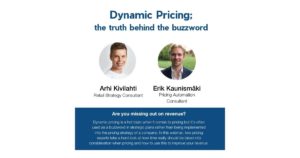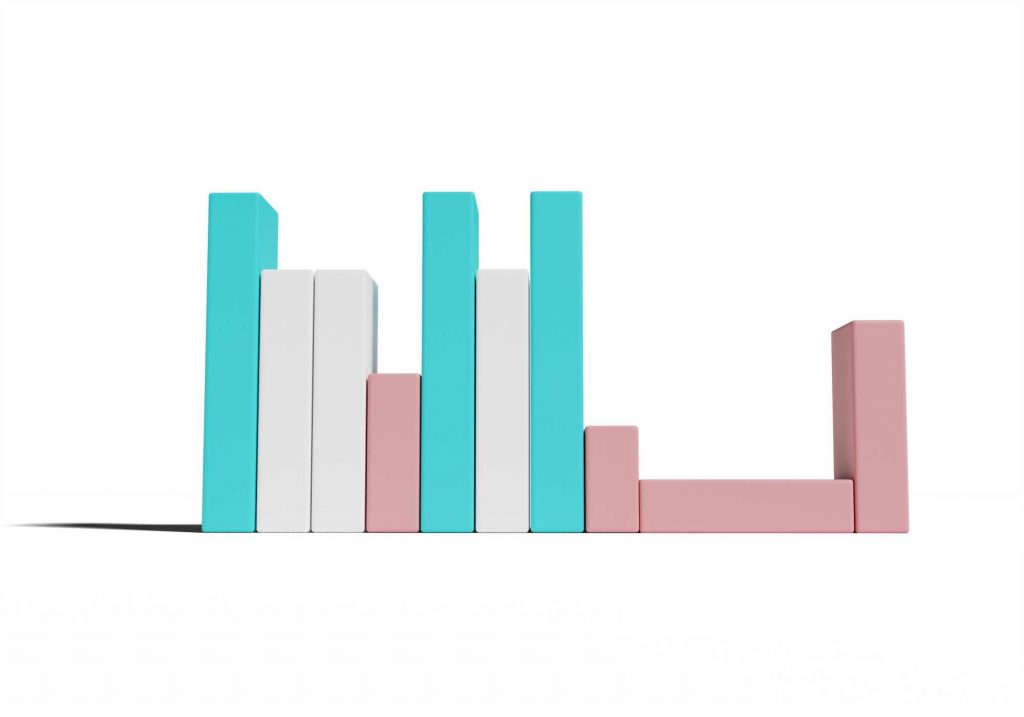Introduction
According to Shopify’s Future of Ecommerce Report 2022, price is a key factor influencing 74% of consumers. So, pricing is definitely the first thing you should keep track of if you want to succeed in e-commerce. In this blog, we continue to update you on the key challenges and top e-commerce pricing trends in 2022. Hopefully, knowing this information will help you develop an up-to-date and effective pricing strategy for your e-stores.
This blog post will discuss:
Key challenges when creating an e-commerce pricing strategy in 2022.
Key challenges when creating an e-commerce pricing strategy in 2022
Inflationary pressure
Both input and output costs keep surging across many industries in 2022, creating inflationary pressures on many businesses. In the European area, the annual inflation rate rose to 8.9% in July 2022, a record-breaking rate reported by Eurostat. Inflation will undoubtedly drive the price increase worldwide. To get guidance on how to price your products during high inflation rate, please read our previous blog post for more details on how to adapt pricing strategies to inflation effectively.
Challenges of a timely and accurate price monitoring method
The pricing data generated by the retail industry has been on the rise due to digitalization. E-retail giants can change their prices every 3 minutes on average to optimize sales. As the competition is fierce, companies using manual price monitoring will have many disadvantages like time-consuming, inefficient, and inaccurate operations. Some years ago, companies needed to buy expensive integrated tools to track competitive prices and develop a price automation service from scratch, but now affordable micro-services like Sniffie’s price monitoring service can update live data of competition’s product prices with a guaranteed 99,9% accuracy in a matter of seconds.
Simple Price Matrix
Use one simple view to understand the market situation immediately.
Effective dashboards
Create super effective dashboards with drill options.

Scalable monitoring
Have any amount of products from 100 to +1M monitored daily.
AI supported
Know which price changes affect your pricing and which do not.
Avoid oversimplified margins
Usually, companies have a plan for all products at a simplified and fixed margin target. However, this approach can be risky for businesses as they may underestimate some products and lose potential profits, or overprice others and sales opportunities. Pricing software, like Sniffie, can allow companies to find the optimal price points to capture potential sales opportunities and maximize profits thanks to its AI-driven technology.
Focus on the right customers to set pricing
The fierce competition does not mean you must feel compelled to serve all customers at any price. Choosing the wrong customers who do not value your products can ruin your pricing strategy. Stay sharp and focus on the right customers, who are willing to pay according to your products’ value.
Latest e-commerce pricing trends in 2022
Transparency in pricing continues to be important for online shoppers
On average, a potential customer will visit at least three different websites before making their purchase. They often compare prices among brands, stores, or locations on their phone to find the best deals in seconds. Thus, price transparency becomes a must to win their trust and loyalty. Moreover, price transparency is obligatory by the new EU Directive Omnibus 2019/2161, which requires online traders in the European market to display prior price information before the pricing promotion campaign. Failure to do this can lead to a company being fined at least 4% of their annual turnover and up to €2m. Therefore, e-business owners, especially in the EU area, should ensure price transparency to online shoppers.
Pricing automation continues to be popular in e-business
Nowadays, pricing automation has become a standard tool for most successful e-businesses as it frees up time on redundant tasks and allows businesses to focus more on company growth. Businesses now can integrate pricing automation tools like Sniffie with ease and minor upfront investment. They can get everything from competitive price intelligence and data analysis to price prediction, pricing strategy setting, and profit maximization suggestions. Not using pricing automation will leave you behind your competitors in keeping up with e-commerce pricing trends and consumers’ demands.
Grow you profits
Keep your product pricing optimum at all times. Test pricing to find new opportunities to create profitability. Keep control by automating the best practices. Keep your profitability at an optimum level. Always.

A dynamic pricing strategy is the top choice of most e-retailers.
Dynamic pricing refers to the strategy of adjusting product prices based on real-time market conditions such as competitors’ pricing, market demand, or supply changes. Large e-commerce platforms, such as Amazon and eBay, leverage dynamic pricing to attract more customers and maximize profit. Averagely, Amazon changes the price of its products every 10 minutes, and shoppers always find that Amazon’s product prices are the lowest among all websites they visit. Dynamic pricing helps Amazon to increase their profits by 25%. Therefore, dynamic pricing is the top choice for most e-commerce businesses to stay competitive and profitable 24/7. Want to know how to adapt dynamic pricing strategies for your e-store? Please read this free guide.
Watch a webinar replay: "Dynamic Pricing —Truth behind the buzzword'

The application of psychological pricing to boost sales
Psychological pricing is based on consumer psychology to influence customers’ perceived value of the products and encourage them to make a purchase.
There are some popular tactics for using psychological pricing:
- Innumeracy: 🔢
This method uses simple math principles and offers an option that looks more appealing to customers. For instance, if your product offers “ buy one get one free” and the competitive brand sells “50% off for two items”, your product will sell better because customers think it is a better deal although the discount rate is the same.
- Odd pricing: 💰
This tactic applies to the odd price, which is slightly cheaper than the original even price. For example, instead of selling a product for €10.00, the store can adjust the price to €9.99, this makes shoppers feel like the product costs less and that they are getting a good deal. A minimal price change can create a significant impact on your sales.
- Artificial time constraints: ⌚️
Businesses can use artificial time constraints to create a sense of urgency and encourage customers to make purchases quickly. Some examples of this practice are “Early bird sale,” “One day only,” or “Only a few hours left.”
With the significant impact on boosting sales, psychological pricing has become one of the uprising e-commerce pricing trends in 2022.
The growing importance of pricing intelligence tools in e-commerce
The booming of e-commerce has led to the urgent need of competitive price monitoring. On one hand, customers search and compare prices among different websites before buying. On the other hand, your competitors continuously adjust their pricing to serve customers’ demands. Failure to track price changes on real time will put your business behind the competition which leads to missing on sales opportunities. Using pricing intelligence tools can help you monitor competitors’ pricing in real-time and propose the best pricing offer to attract customers.
Time to start monitoring the market?

Personalized pricing implementation needs to comply with privacy laws
Personalized pricing is a method when businesses set prices at a different level for each consumer based on their characteristics and willingness to pay. Companies often collect consumer data to analyze their buying patterns and offer each buyer different discounts and bundles with the help of an AI engine. Personalized pricing now needs to comply with the current privacy law. In Europe, the new EU Directive Omnibus 2019/2161, requires online traders in the Euro area to inform their customers if they apply personalized pricing in their e-stores.
Final words
As price is a crucial factor in influencing the consumer’s purchasing decision online, businesses need to update their e-commerce pricing strategies to match current pricing trends. At Sniffie, we offer automated pricing tools that allow you to focus more on your business plan instead of tedious manual pricing tasks. If you have any pricing challenges, don’t hesitate to contact us here.


